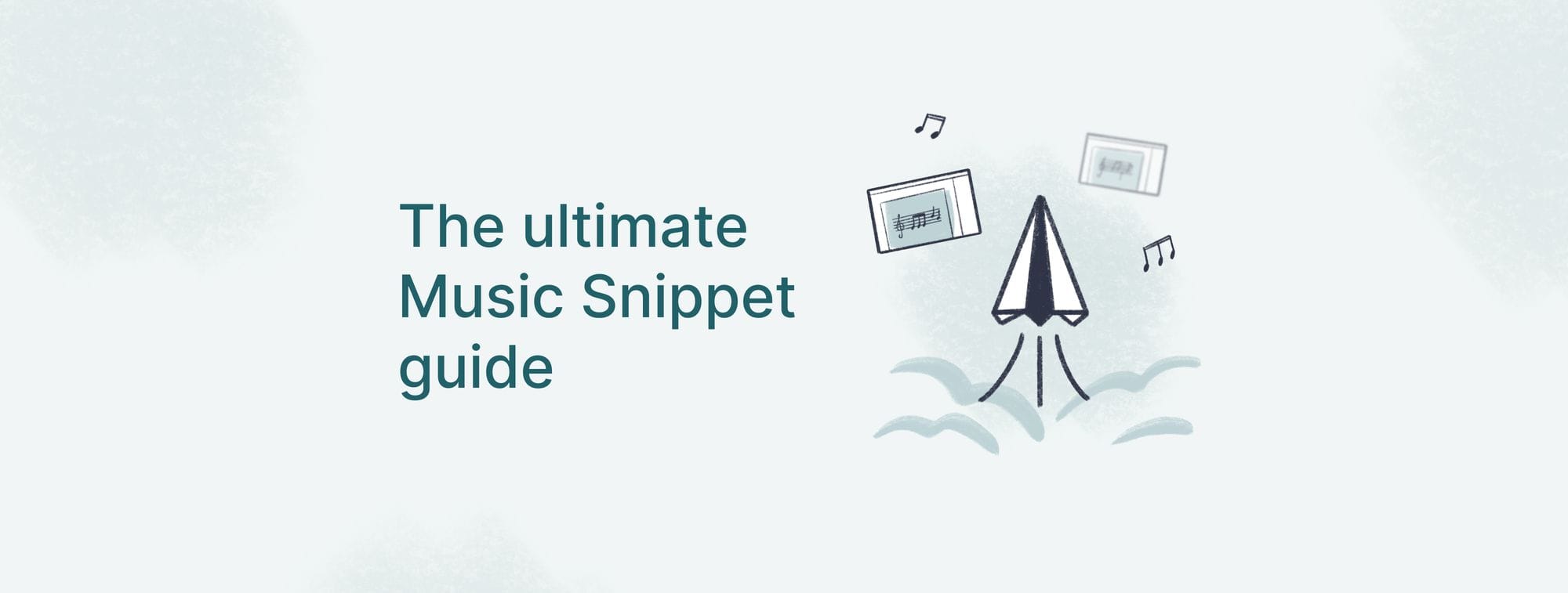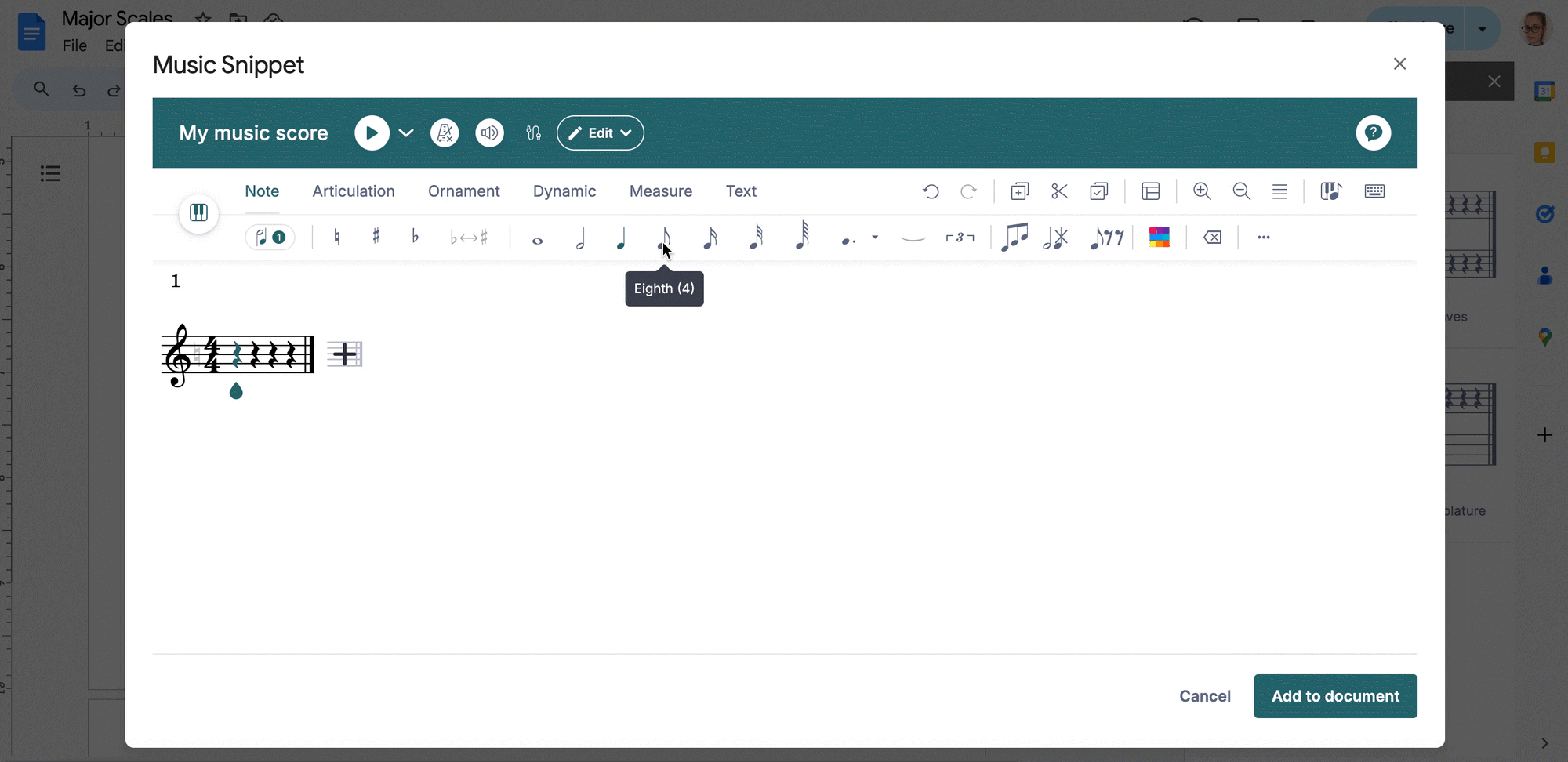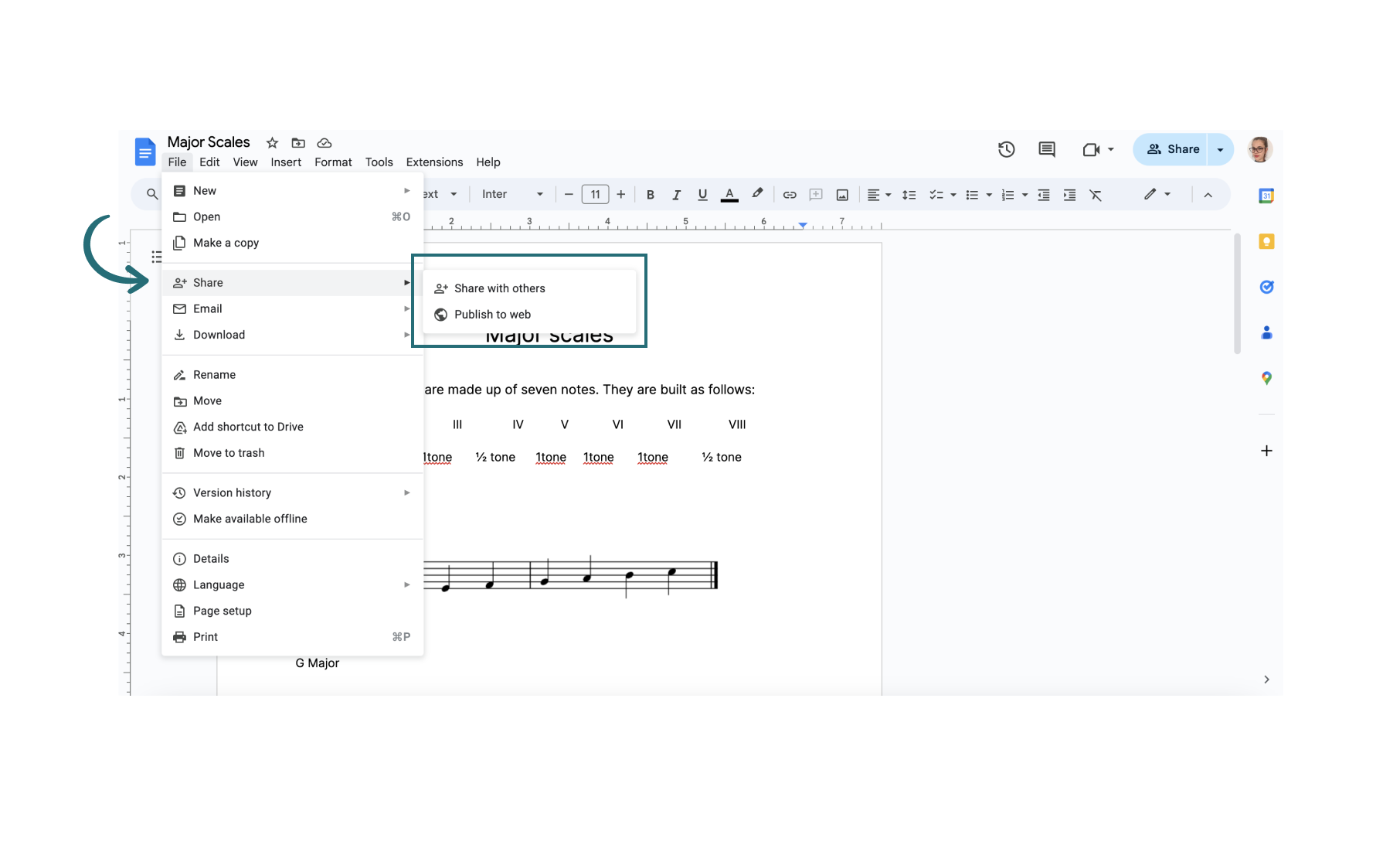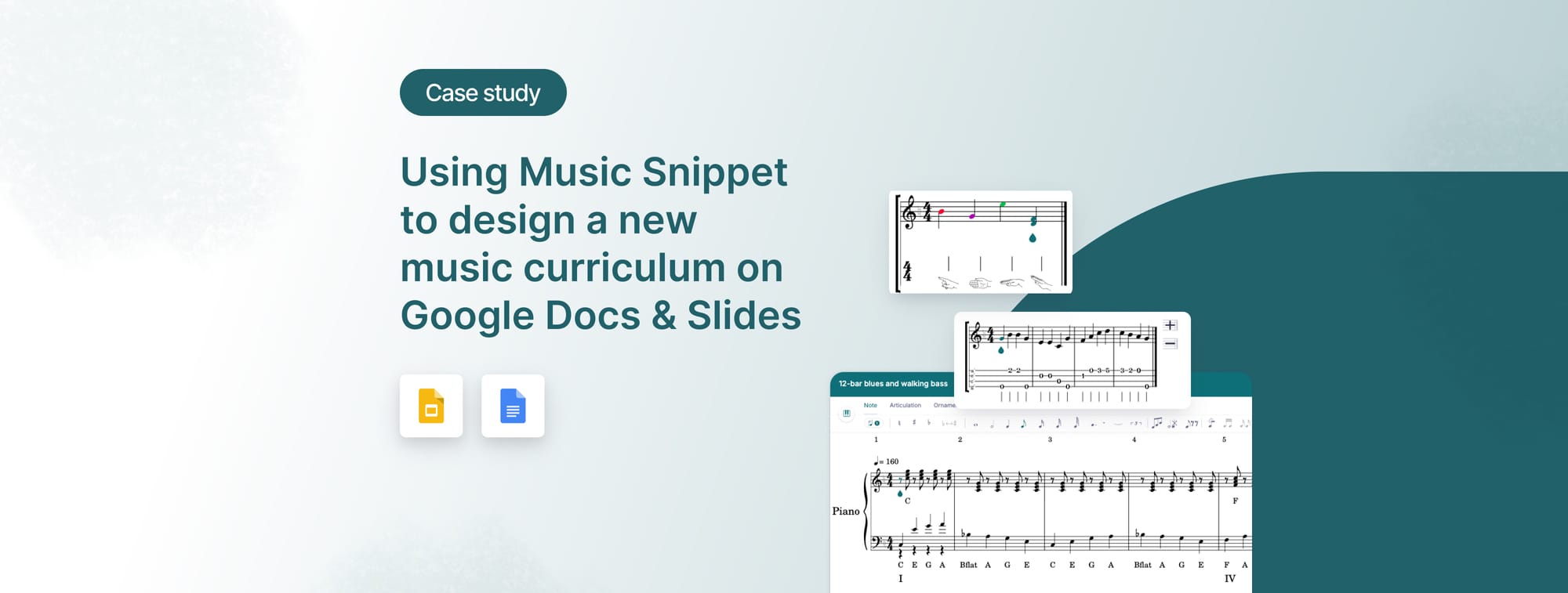At Flat for Education, we love talking with our users: whether it’s with useful product feedback to simply some kind words, they keep our daily motivation levels soaring high. Recently, we spoke with Angela Reichenbach, a teacher from Canada, about how she’s been using Music Snippet to design a new gospel music curriculum.
What is Music Snippet?
Available as an add-on in Google Workspace, Music Snippet lets you seamlessly add score snippets to your Google Docs and Google Slides. This can be useful for many musicians, but it has proven particularly well adapted to educational settings.
Music Snippet lets teachers craft engaging presentations and lessons, ensuring that their students are exposed to music with both their ears and their eyes. And with a growing Snippet library being automatically saved as you go along, it’s easy to create, re-use, and adapt score selections for future classes.
💡 If you are just starting with Music Snippet, this guide is for you:

Music Snippet guide
How to write a new music curriculum with Music Snippet
The importance of a music curriculum
The importance of having a prepared curriculum in music education cannot be overstated. Research consistently shows how crucial a thoughtfully prepared curriculum is in this field. Hennessy (2000) points out that a solid curriculum boosts student teachers' confidence in teaching music, highlighting the link between good preparation and the ability to teach music effectively. Similarly, Ballantyne and Packer (2004), in their work published in "Music Education Research," highlight the importance of having curricula that fully equip teachers to meet the challenges of music education. These studies make it clear that a well-prepared curriculum is essential for maintaining high-quality music education, benefiting both students learning music and teachers guiding this learning journey.
Experienced teachers know just how much of a help it is to walk into a classroom with a thorough, considered curriculum in hand. Their appreciation comes from knowing just how much work goes into creating such a curriculum from scratch. For many years, this was particularly true in the music classroom, as pulling together all of the necessary materials – including score excerpts – was a very time-consuming process.
But starting from scratch was exactly what Angela had to do with her latest challenge: developing a year-long music curriculum for the gospel students at Toronto’s Zamar Music Academy. While the students at Zamar train their ears before moving on to learning how to read written music – using exercises to help understand chord progressions, natural numbers systems, scale degrees, etc. –, the teachers need a curriculum that includes written notation.
Copy/paste isn’t the answer
With almost 30 years of experience in music classrooms, Angela knew there were software tools that promised to add music notation to your documents. But that experience had also shown that those tools weren’t up to the standards she was looking for:
“I didn’t want to write the music somewhere else and then need to cut & paste it in. There’s stuff out there for that, but it’s complicated, it’s not click-and-drag, it’s not quick.”
Angela needed a better, more streamlined way of adding music notation into her new lessons. Luckily, she started working on the curriculum in Google Docs, where she soon discovered our add-on.

Getting started with Music Snippet: “I’ve learned just by clicking!”
Music Snippet’s incorporation within Google means that it’s up and running in a document in no time. And as with all Flat for Education products, the process of writing and inserting music notation is designed to be simultaneously intuitive and robust.
Angela says,
“I wanted something quick, and when I came across even just the name in Google Docs, ‘Music Snippet,’ it said to me it would be quick. And it is!”
When she gets to the section of a lesson that will include music, she simply clicks open the add-on, selects the basic notation that she needs, and writes out the notes.
The curriculum can then be continued, with music and words flowing together in a single document.

Creating new lessons with your own music notation
Since gospel is typically learned in churches rather than schools, Angela knew that she would need to develop new materials for her students. She started by concentrating on the aspects that she knows best, vocals and piano.
“One way I use it is in creating new materials based on my knowledge of the anatomy of the voice. I’m a big fan of the Estill Voice methodology, and I use it with both younger and older learners. For this class, I’ve built tasks that help with the intervals that show a person can go from thick to thin on vocal folds, and things like that. So I’m not just describing a lesson or activity, I can create the right practice clips and have them in the curriculum, all ready to go.”
Within the process of creating new musical examples, Angela pointed to one feature as a real time-saver: what she refers to as the tool’s “intelligence”. Since her music curriculum needs to flow logically, many of the music notations that she wants to insert are grouped together within the document.
For example, if she’s working on an exercise that requires music written in eighth notes, the software adapts to continue writing in eighth notes rather than asking her to continually go into the settings to make the change manually.

Share your music curriculum and add new instruments
While Music Snippet is currently used within Google Docs and Google Slides, there is no problem with exporting the document to a different format, such as .word or .pdf. This makes sharing the curriculum with fellow teachers easy, whether in an editable format or not.

If you want to expand the range of sounds within a curriculum, you can also easily add other collaborators to the Google document. While those collaborators will also need their own software license, this is a fast way to increase the usefulness of a given curriculum. Having developed this music curriculum thanks to her experience, specialized knowledge, and Music Snippet, Angela has brought in a guitar teacher to include that instrument in the class as well.

Because they have both the foundations for each lesson and the specific music notations that Angela has created, expanding the curriculum is a relatively straightforward process. Each additional instrument can use Music Snippet to include music that works on different scales and chords, clearly indicating how everything should sound for that instrument.
Opening new musical pathways
While Music Snippet has been Angela’s first experience with a Flat product, it hopefully won’t be her last. The end of our discussion turned toward how her work with adult learners through her own music studio could be facilitated with the full music notation editor available with Flat for Education. Needless to say, we’re looking forward to future collaborations!
Many thanks to Angela for joining us and sharing her musical journey 🎼 🎼 If you’d like to find out more about how Music Snippet could make your presentations or teaching routine easier, check out its full list of features here.
References:
- Hennessy, S. (2000). Overcoming the red-feeling: the development of confidence to teach music in primary school amongst student teachers. British Journal of Music Education, 17, 183 - 196. https://doi.org/10.1017/S0265051700000243.
- Ballantyne, J., & Packer, J. (2004). Effectiveness of preservice music teacher education programs: Perceptions of early-career music teachers. Music Education Research, 6, 299 - 312. https://doi.org/10.1080/1461380042000281749.
